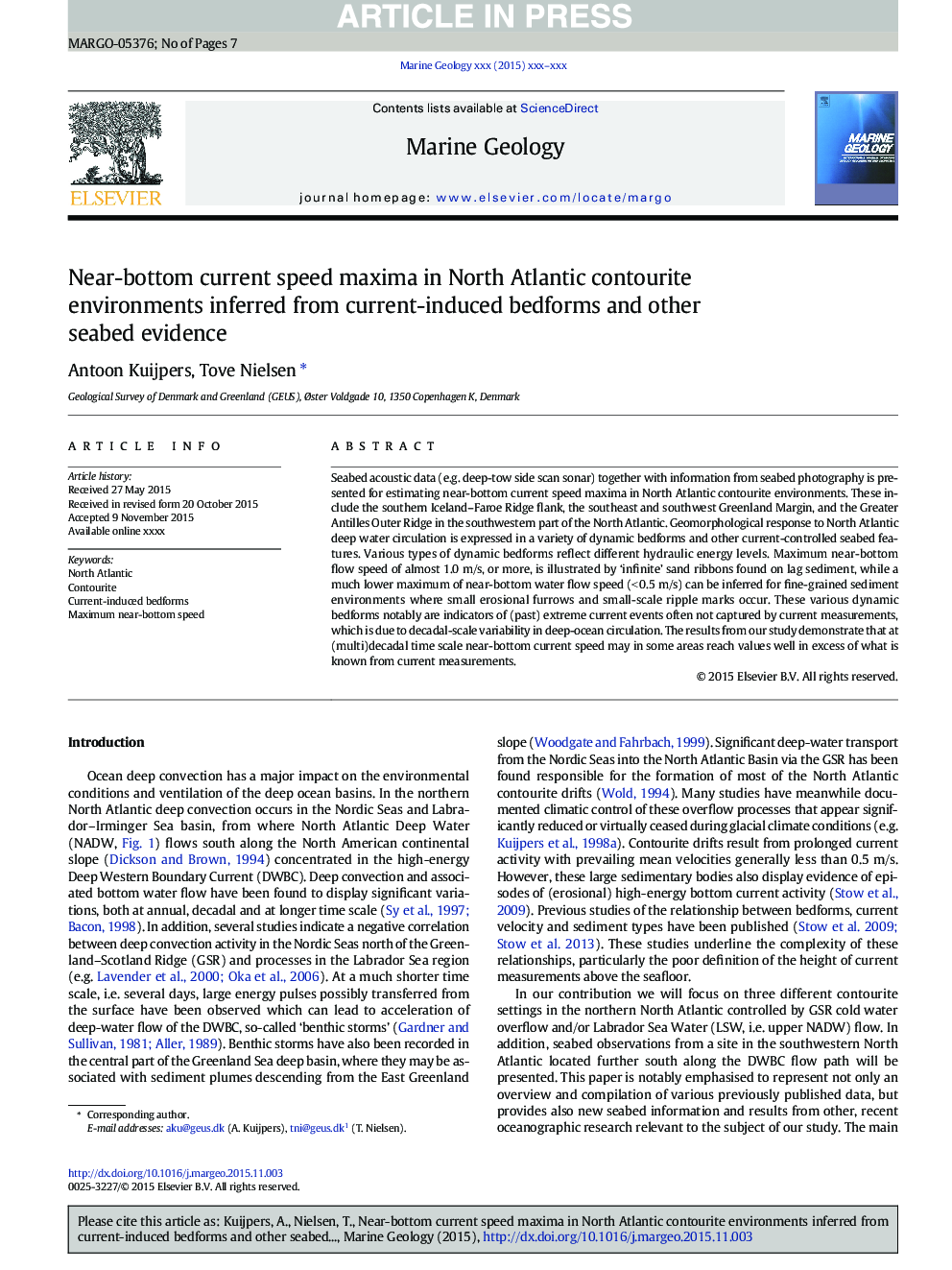| Article ID | Journal | Published Year | Pages | File Type |
|---|---|---|---|---|
| 6441409 | Marine Geology | 2016 | 7 Pages |
Abstract
Seabed acoustic data (e.g. deep-tow side scan sonar) together with information from seabed photography is presented for estimating near-bottom current speed maxima in North Atlantic contourite environments. These include the southern Iceland-Faroe Ridge flank, the southeast and southwest Greenland Margin, and the Greater Antilles Outer Ridge in the southwestern part of the North Atlantic. Geomorphological response to North Atlantic deep water circulation is expressed in a variety of dynamic bedforms and other current-controlled seabed features. Various types of dynamic bedforms reflect different hydraulic energy levels. Maximum near-bottom flow speed of almost 1.0Â m/s, or more, is illustrated by 'infinite' sand ribbons found on lag sediment, while a much lower maximum of near-bottom water flow speed (<Â 0.5Â m/s) can be inferred for fine-grained sediment environments where small erosional furrows and small-scale ripple marks occur. These various dynamic bedforms notably are indicators of (past) extreme current events often not captured by current measurements, which is due to decadal-scale variability in deep-ocean circulation. The results from our study demonstrate that at (multi)decadal time scale near-bottom current speed may in some areas reach values well in excess of what is known from current measurements.
Keywords
Related Topics
Physical Sciences and Engineering
Earth and Planetary Sciences
Geochemistry and Petrology
Authors
Antoon Kuijpers, Tove Nielsen,
